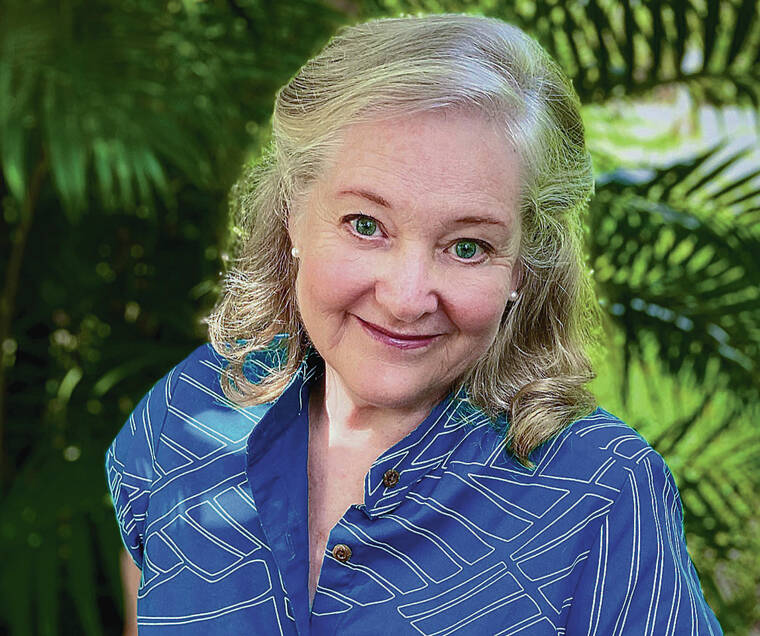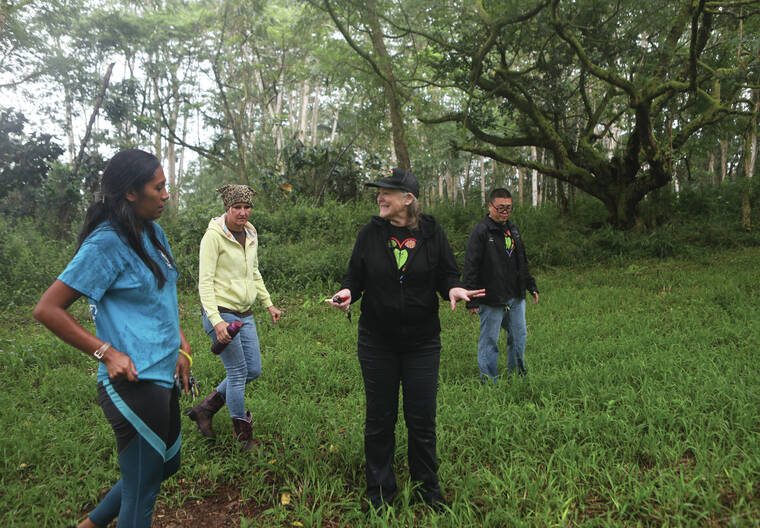The Hawaii Island Food Basket is preparing to start capital campaigns for its future agricultural innovation campus in Hilo.
With newly acquired 24.5 acres of land, The Food Basket is working to create the Hawaii Island Agricultural Innovation Park and Food Systems Campus, which will help alleviate food insecurity, lift barriers to pursuing agriculture, and respond to the current economic downturn by providing the capital needed to create a robust agricultural economy.
The parcel is located off Ponahawai Street and was purchased from Suisan in 2022 for $1.6 million.
Last year, The Food Basket was one of 60 finalists for the Build Back Better federal grant, although the nonprofit did not receive the $100 million gift. So, plans are being made to raise the capital needed to build the multimillion dollar campus.
“We’re planning to do a capital campaign, and I’m developing a plan for that. They are a little bit tricky since we’re trying to keep up our operational budget, but also asking for a little extra for the campus,” said Leelen Park, director of development. “We should have a better idea of what the capital campaign will look like at the end of April. Fundraisers are definitely in our future.”
The Food Basket will seek federal and state grants to help with the development of the campus.
The Food Basket Executive Director Kristin Frost Albrecht is following Hawaii House Bill 1426, which is a bill to establish a food and product innovation network within the Agribusiness Development Corporation. The bill would appropriate funds for food and product innovation on Hawaii Island, Molokai and Oahu.
The bill currently is being discussed and is moving between the Senate and House.
“I love the concept of building innovation centers on every island, especially if they focus on what each island grows naturally,” Frost Albrecht said. “Everyone gets why this is important now, especially in the aftermath of COVID-19, which has caused supply chain issues, inflation, increases in costs of services, and so many other things.”
While waiting on more funding, The Food Basket has enough money to start looking for a local architect, developing a portion of the agricultural land, and clearing a portion of the land for buildings.
“We want to emphasize our mission of malama the ‘aina. We are going to be considerate of the land and keep what we can,” Frost Albrecht said. “There aren’t plans to completely raze the land, because the forest is impressive, beautiful and has native produce already growing.”
After receiving the funding necessary to start building, The Food Basket will develop the agricultural land and build the food bank first, which will greatly expand the warehouse space while adding community spaces for hot meals, education and interaction.
The future food bank will be the first part of Phase A of the development plan, which also includes the agricultural land support structure and the Agricultural Innovation Center, which will be have spaces for agricultural production, a commercial kitchen for volume food preparation, and product manufacturing from food grown on campus.
The Hawaii Island Community Food Center and Food Bank is estimated to cost $31 million, the Agricultural Lands Support Structure will cost $4 million and the Agricultural Innovation Center will be $42.5 million, making the approximate development budget for Phase A about $78 million.
Frost Albrecht hopes that construction, or plans for construction, can be solidified by the end of this year. Especially since the COVID-19 pandemic-era boost to Supplemental Nutrition Assistance Program ended last month.
“We need food sustainability now more than ever, especially with the decrease in SNAP benefits,” Frost Albrecht said. “Cost of living is so high here and there are so many hardships families face. Unexpected set backs, such as health emergencies, can cause families to suddenly not be able to afford groceries.”
Frost Albrecht said she’s seen more traditionally middle class people visit The Food Basket’s emergency window of food assistance. The food bank is working to continue expanding its programs like Da Bux, Kupuna Pantry and Kokua Harvest to reach more people in need.
“We work really hard to have diverse programs at The Food Basket to reach as many people in need as we can,” Park said. “We continue to push sustainability and healthy eating, while also keeping up with our partner agencies around the island.”
According to the food bank, the amount of clients receiving ongoing monthly support has grown from 14,000 to 50,000 people.
“The Food Basket has a really big mission, and it takes a broad approach. It’s not just one thing, “ Frost Albrecht said. “It’s all of these programs working together. I think the campus will encompass all of that, and it’ll be nice to have us all under one roof.”
The Food Basket currently is working on a website where people can get updates about the development of the Innovation Park.
For now, those looking for food assistance are encouraged to come to The Food Basket’s emergency food window from 1 p.m. to 3 p.m. Mondays through Fridays in Hilo and Kona.
More information visit thefoodbasket.org.
Email Kelsey Walling at kwalling@hawaiitribune-herald.com.


